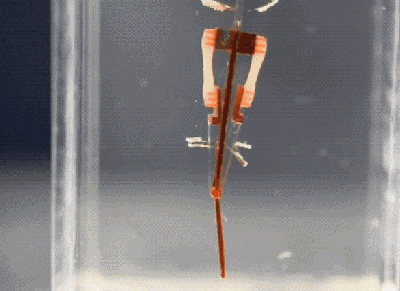Release date: 2018-06-05

Researchers at the University of California, San Francisco have developed a system that allows cells to develop into complex organs like embryonic development.
Sina Technology News Beijing time on June 5th news, according to foreign media reports, a new study said that scientists invented a new type of synthetic tissue that can be cultivated into any part of the human body.
Researchers at the University of California, San Francisco have developed a novel compound that mimics the DNA's instructions to differentiate cells into different tissues. Using this method, scientists can allow these cells to automatically differentiate into different structures and colors, similar to the early embryonic development process.
The ability to create complex physiological tissues through this level of control means that scientists may soon be able to abandon 3D printing and switch to a more natural way to grow organs.
Nowadays, the world is facing an organ shortage problem, and about 114,000 people can only wait for the hope of a glimmer of hope. Modern medicine has made a huge leap in organ transplantation, reducing the chance of organ rejection and finding ways to get more transplantable organs. But this is not enough. On average, 20 people worldwide die every day because they can't wait for the right organs.
Advanced laboratories are now using 3D printing technology to address organ shortages and to develop custom-made organs for patients. However, the organs that have been successfully cultivated with these techniques are still quite limited.
More and more scientists are using stem cells to grow organs. But so far, only 11 organs have been cultivated "out of thin air" in the laboratory, and many of them are only miniature versions of real organs.
The cost of manufacturing organs using 3D printing has been very exciting for the medical community, but the technique can only produce flat organs such as skin and blood vessels or hollow organs such as the bladder.
“People often talk about 3D printing organs, but the technology is actually very different from the way natural organs are developed. Imagine if you want to put one cell in place and glue it together, create a human in this way. "How hard it is." Dr Wendell Lim said, "It is equally difficult to print a complete organ and ensure that it is connected to the blood vessels and the body."
Dr Kole Roybal, co-author of the study, Dr. Lime's laboratory, developed a technology called SynNotch that allows scientists to edit cells to communicate and collaborate. Therefore, it develops into a mature organization, which saves the doctors the tedious work of cultivating the organization, and has improved a lot more than the previous organ cultivation techniques.
The surgical procedure will also be at risk if the function of the device is long enough for the size of the transplant. Doctors need to connect organs to the necessary blood vessels and nerves to ensure that the organs function.
"If we can develop new organs directly in the patient's body and let them grow to the right place, isn't it good?" Dr. Lim said.
The system he developed may be able to achieve this. In the team's experiments, SynNotch technology transmits instructions to embryonic cells to differentiate into a three-layered tissue layer of the embryo. These cells not only follow instructions, immediately differentiate into specific shapes and colors, but also grow up slowly like real embryos.
"The beauty of this self-integrating system is that they can be automated and the process is compact. You only need to put one or two cells into the system, they will start growing, arranging and solving various details. Lime pointed out.
Source: Sina Technology
Dental Handpiece Lubrication Machine,Dental Lubricating Machine,Handpiece Lubricating Machine,Dental Handpiece Lubricant Device
Foshan Ja Suo Medical Device Co., LTD , https://www.jasuodental.com